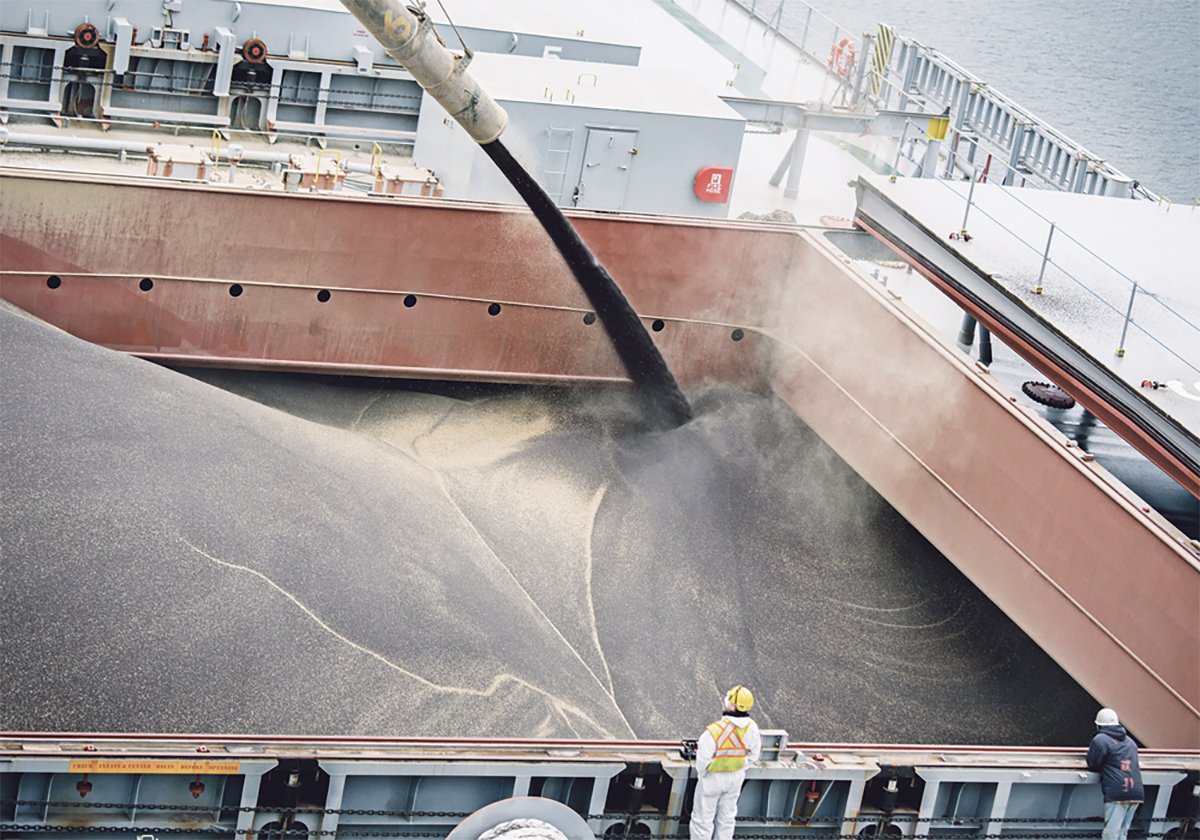A famed Winnipeg bull market predictor is telling farmers to be cautious, even though he thinks higher prices will arrive in the spring.
“I’m not the raging bull that I was in early 2008,” said David Drozd, a technical analyst and head of farmer advisory firm Ag-Chieve.
“It’s a different market environment. We could see weakness in here.”
Drozd received a lot of attention in early 2007 when he predicted $7 wheat prices and then told his clients in early 2008 to keep their bin doors closed until spring.
Read Also

Exports off to a slow start after last year’s torrid pace
Canadian grain, oilseed and pulse exports are off to a slow start, but there are some bright spots, according to the Canadian Grain Commission’s most recent weekly export data report.
That advice, which captured much of the historic 2008 explosion in crop prices, stamped him in many producers’ minds as a successful bull market predictor, but he is now one of the few forecasting a downward correction.
While he still needed more confirmation that crop markets are beginning a corrective phase, he said Jan. 7 that he believes they are most likely to be weakening.
He expects the bull market in crop prices to return near seeding time, but from now into early March the market is more likely to go down than up.
“It won’t go straight up between now and July,” said Drozd.
“It’s not if we correct, it’s when we correct.”
Drozd’s caution is based on technical indicators that he finds generally accurate, including sentiment and seasonality.
Right now most crop market analysts are bullish about prices, which Drozd thinks is worrisome. Whenever everyone gets bullish, prices tend to rise too fast too soon and then sell off at the first sign of bad news. That’s the case now, he fears.
“There’s been a lot of bullish news recently,” he said.
“I’m starting to look for reasons to look the other way.”
Rich Nelson of analytical firm Allendale Inc. in McHenry, Illinois, has also noticed the overwhelming bullishness but doesn’t think it’s a sign of market hubris.
“It’s one of the times when the outside markets are in agreement with most of the commodity analysts,” said Nelson.
Fundamental supply and demand is supporting prices at the same time that investment funds are putting money in agricultural commodities, he said.
Investor’s Intelligence, a technical analysis firm, reports U.S. equity market bullishness to be at extremely high levels.
Currently, 80 percent of investing advisers are bullish, reaching close to the levels seen in 2009 and 2010 as markets roared out of the 2008-09 recession. Just six months ago bullishness was only 40 percent.
Drozd thinks overdone bullishness could combine with the typical seasonal price cycle to bring about a substantial correction.
He said crop market futures usually drop between early January and early March. That’s partly due to the maturation of the South American crops, which steadily move beyond weather concerns, and partly due to the liquidation of March futures contract positions.
As fears subside and investors move out of speculative long positions, prices weaken. Drozd acknowledged that the market could soar if serious new weather woes appear in South America, but he thinks that’s unlikely.
“We’re either going to explode (higher) on a short-covering rally on that unwinding (of March futures positions), which is what happened in 2008, or we’re going to go down in long liquidation, which is what we do in most years,” said Drozd.















